Ethiopia, located in the Horn of Africa, is a land brimming with an array of natural and cultural treasures. Known for its striking landscapes and profound history, Ethiopia offers a wealth of resources that captivate locals and travelers alike.
From the majestic Ethiopian Highlands to the fertile valleys of the Great Rift, the country's geography is a testament to its abundant natural resources. Not only does Ethiopia boast rich mineral deposits, but it is also home to some of the world's rarest coffee beans.
Beyond its physical affluence, Ethiopia shines with its cultural heritage. With over 80 distinct ethnic groups, the cultural diversity in Ethiopia is vast and vibrant. Each group contributes unique traditions, languages, and festivals, painting a mosaic of human heritage.
Historically, Ethiopia holds a special place in the world. It is one of the oldest countries, with a history that dates back thousands of years. The ancient city of Axum, the rock-hewn churches of Lalibela, and the castles of Gondar are just a few of the historical landmarks that embody Ethiopia's rich past.
Today, Ethiopia continues to grow and modernize while celebrating its roots. The country is making strides in infrastructure, education, and technology, all while preserving its unique identity.
Natural Resources
Ethiopia's landscape is a veritable treasure trove of natural resources. It is defined by its geographic diversity, ranging from vast highlands and plateaus to fertile valleys and savannas. One of the most significant resources Ethiopia is known for is its agricultural bounty. Due to its varied climate, the country is able to produce a wide range of crops, including coffee, teff, maize, sorghum, and various fruits and vegetables. Notably, Ethiopia is the birthplace of coffee. The coffee plant, native to Ethiopia, has been cultivated here for centuries. The country is known for producing some of the finest coffee beans in the world, and coffee remains a crucial export commodity.
Apart from agriculture, the country is endowed with significant mineral resources. These include gold, platinum, copper, potash, and natural gas. In particular, gold mining has a long history in Ethiopia and continues to be an important economic sector. The Lega Dembi gold mine, for example, is one of Africa's largest and most productive sources of gold. Additionally, the mining of precious stones such as opals is increasing, with Ethiopian opals becoming globally recognized for their quality.
Water resources are another vital asset. Ethiopia features several major river systems, the longest being the Blue Nile, which contributes significantly to the Nile River. With substantial amounts of fresh water, the country has immense potential for hydroelectric power. In recent years, Ethiopia has invested heavily in hydroelectric projects, including the Grand Ethiopian Renaissance Dam, which, once completed, is expected to be the largest dam in Africa and provide significant electricity generation and irrigation benefits.
The World Bank notes, "Ethiopia’s investments in hydroelectric power have the potential to transform it into an energy hub for the region."
The country's forests and biodiversity add another layer to its natural riches. Forested areas are home to a variety of plant and animal species, some of which are endemic. These forests are essential for timber, medicinal plants, and as habitats for wildlife, which also supports eco-tourism. The Simien Mountains National Park, a UNESCO World Heritage site, is a prime example of Ethiopia's natural beauty. It's home to rare species such as the Ethiopian wolf, walia ibex, and gelada baboon.
Lastly, Ethiopia's livestock sector is one of the largest in Africa, contributing significantly to the livelihoods of many. The country has an extensive livestock population that includes cattle, sheep, and goats. Livestock products, especially meat and leather, are vital exports. The traditional pastoral lifestyle that has sustained the Ethiopian people for centuries is a testament to the importance of livestock in the country.
In summation, Ethiopia's wealth of natural resources—from its fertile soils and abundant water sources to its precious minerals and rich biodiversity—forms a robust foundation for its economy. These resources offer vast potential for sustainable development and growth, helping to secure the future prosperity of the nation.
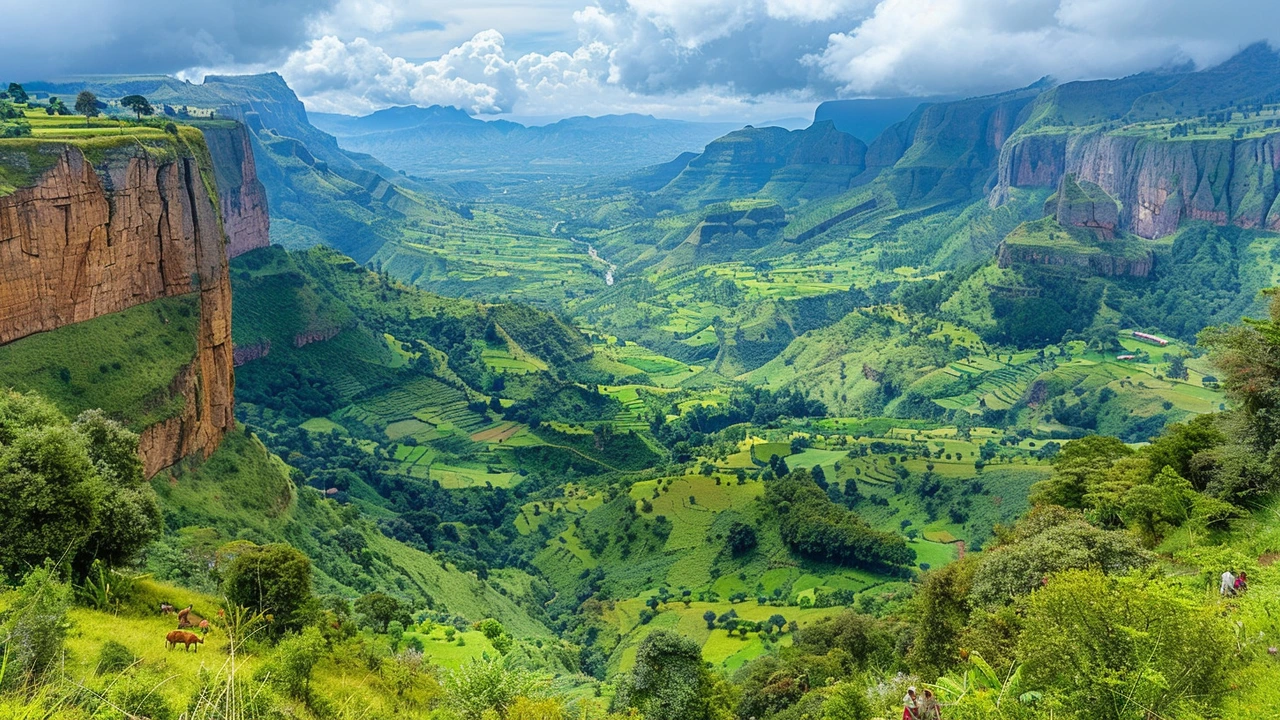
Cultural Heritage
The heart of Ethiopia's allure lies in its exquisite cultural heritage, a vibrant tapestry woven from the threads of over 80 diverse ethnic groups. Each group brings its traditions, languages, music, dances, and festivals that together form a rich and varied cultural landscape. One of the most iconic celebrations in Ethiopia is Timkat, also known as Epiphany. Observed in January, this colorful festival commemorates the baptism of Jesus in the Jordan River. People dress in white, carrying ornate crosses and umbrellas, as they participate in processions and ceremonial holy water blessings.
The Oromo, the largest ethnic group in Ethiopia, are known for their traditional Gadaa system, a sophisticated socio-political system that governs every aspect of life, from birth to death. This age-set system has been recognized by UNESCO as Intangible Cultural Heritage of Humanity. The Amhara, another major ethnic group, are custodians of the Ge'ez script, one of the oldest alphabets still in use today, and the Ethiopian Orthodox Church, known for its unique religious art, music, and liturgy.
Ethiopia's culinary heritage is no less remarkable. The country's cuisine is distinguished by its use of unique spices, including berbere and mitmita, and the staple food, injera - a sourdough flatbread made from teff, an ancient grain. Meals are often communal, eaten with the hands, reflecting the country's strong emphasis on community and kinship. This shared experience of food nurtures bonds and serves as a profound expression of Ethiopian hospitality.
Music and dance are integral to Ethiopian culture. The krar (a traditional lyre), masenqo (a single-stringed fiddle), and washint (a wooden flute) are commonly used in folk music, producing haunting melodies that have been passed down through generations. Each ethnic group boasts its native dances, like the shoulder dance, or eskista, performed by the Amhara, where rapid shoulder movements convey both joy and storytelling. This tradition of song and dance is not merely a form of entertainment but a means of preserving history and cultural identity.
The country's religious diversity is also a cornerstone of its cultural richness. Christianity, Islam, and Judaism have coexisted for centuries in Ethiopia, contributing to a historical narrative unlike any other. The rock-hewn churches of Lalibela, carved out of solid rock in the 12th century, are symbolic of Ethiopia's ancient Christian heritage. In contrast, Harar, a UNESCO World Heritage site, is celebrated as one of Islam's holiest cities, with 82 mosques and 102 shrines making it an important spiritual center.
Traditional clothing, often made from handwoven cotton adorned with intricate embroidery, adds to the cultural richness. The shemma and gabi, typical Ethiopian garments, are worn during special occasions, showcasing the fine craftsmanship and artistry of Ethiopian weavers. These clothes are not just garments but embody cultural pride and identity.
Ethiopia's rich storytelling tradition is another facet of its cultural wealth. Folktales, fables, and epic poems, often passed down orally, form an integral part of Ethiopian culture. These stories, which range from moral tales to heroic epics, play a crucial role in preserving history, values, and wisdom from one generation to the next. The Ethiopian epic, the Kebra Nagast, which tells the story of the Queen of Sheba and King Solomon, is a prime example of this literary tradition.
"Ethiopia's cultural heritage is a living museum, a testament to the resilience and ingenuity of its people," said historian Richard Pankhurst.
In recent years, there has been a revival and preservation of Ethiopia's cultural heritage through various initiatives. Museums, cultural centers, and festivals celebrate the rich heritage, fostering a sense of pride and continuity among Ethiopians. These efforts ensure that the unique cultural tapestry of Ethiopia remains vibrant and influential for generations to come.
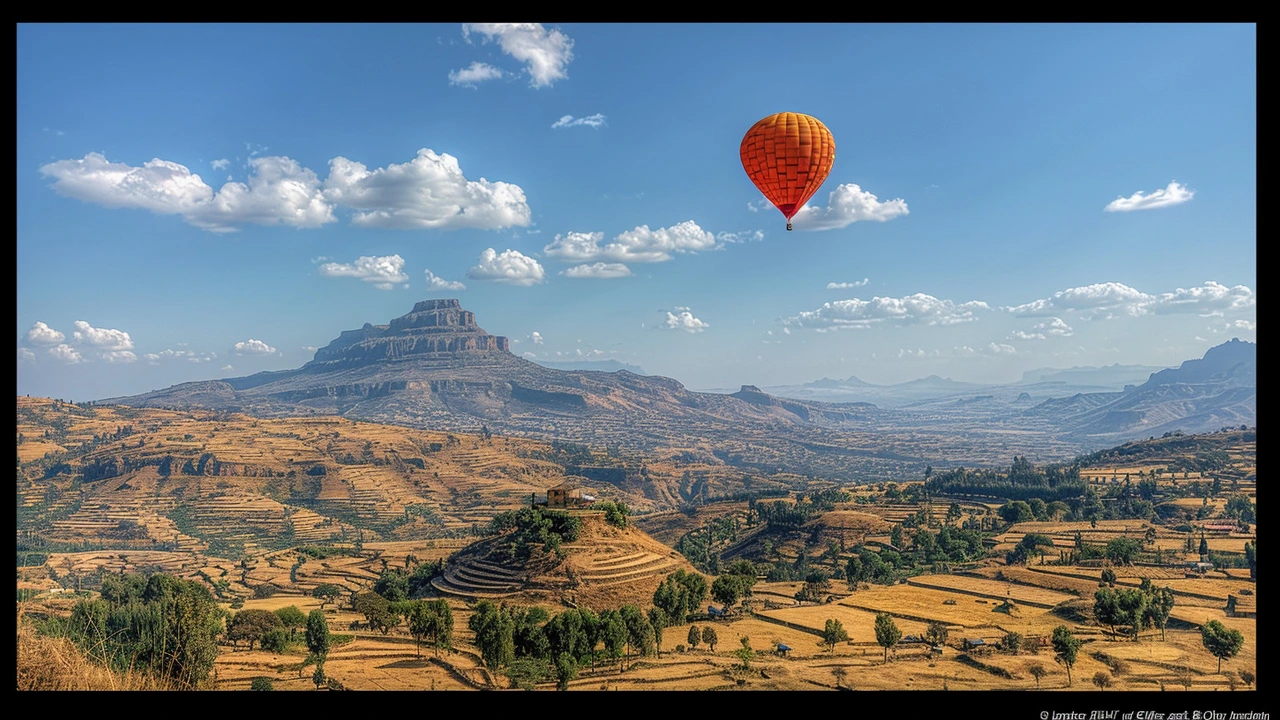
Historical Significance
Ethiopia's historical significance is monumental, deeply entwined with the very roots of human civilization. Archaeological findings in the Awash Valley have uncovered fossils of early hominids that date back over 3 million years, including the famous Lucy skeleton. This remarkable discovery has cemented Ethiopia’s place as a cradle of humankind, providing invaluable insight into our earliest ancestors.
The ancient city of Axum is another cornerstone of Ethiopia’s rich history. Emerging around the 1st century AD, Axum became a major trading empire that connected the Roman Empire and Ancient India. This city is also reputed to be the final resting place of the Ark of the Covenant, a symbol of immense religious and historical significance. The stone obelisks of Axum, some towering up to 33 meters high, still stand today as a testament to the engineering prowess of this ancient civilization.
Ethiopia is also unique for being one of the few African nations to resist European colonization. Under the leadership of Emperor Menelik II, Ethiopian forces famously defeated the invading Italian army at the Battle of Adwa in 1896. This victory not only secured Ethiopia's sovereignty but also became a beacon of hope and inspiration for other nations under colonial rule. Many historians regard this event as a pivotal moment in African history.
The architectural wonders of Lalibela also highlight Ethiopia's historical depth. The rock-hewn churches, carved directly into the earth, date back to the 12th and 13th centuries. These subterranean structures were crafted to serve as a 'New Jerusalem' for Christian pilgrims and are still in use today. The intricate carvings and labyrinthine passages of the churches speak volumes about the artistic and spiritual aspirations of their creators.
"Ethiopia's history is not just about survival but about the flourishing of human culture and society against the odds," says noted historian Richard Pankhurst.Ethiopia's contribution to Christianity is also notable. The Ethiopian Orthodox Church, one of the oldest Christian denominations in the world, traces its origins back to the 4th century. The church has played a central role in shaping Ethiopian culture and identity, and its religious texts and artifacts offer a window into the country’s spiritual journey over the centuries.
The city of Harar, another historical jewel, is recognized for its Islamic heritage. Founded in the 7th century, Harar became a significant center for Islamic scholarship and trade. Often called the 'City of Saints,' it boasts 82 mosques and 102 shrines within its walls. UNESCO has designated Harar as a World Heritage Site, acknowledging its cultural and historical significance.
Gondar, often referred to as the Camelot of Africa, served as the capital of Ethiopia in the 17th and 18th centuries. The city is renowned for its series of castles and palaces, including the famous Fasil Ghebbi fortress. These structures reflect a unique blend of local and European architectural styles, symbolizing Ethiopia's openness to external influences while maintaining its distinct identity.
In modern times, Ethiopia's historical narrative continues to evolve. The country has faced challenges and transformations, from the Derg regime's overthrow to the current federal structure. Each era leaves its mark, adding layers to Ethiopia’s already complex history. Today, the nation strives to balance preservation of its rich historical legacy with the demands of contemporary progress.
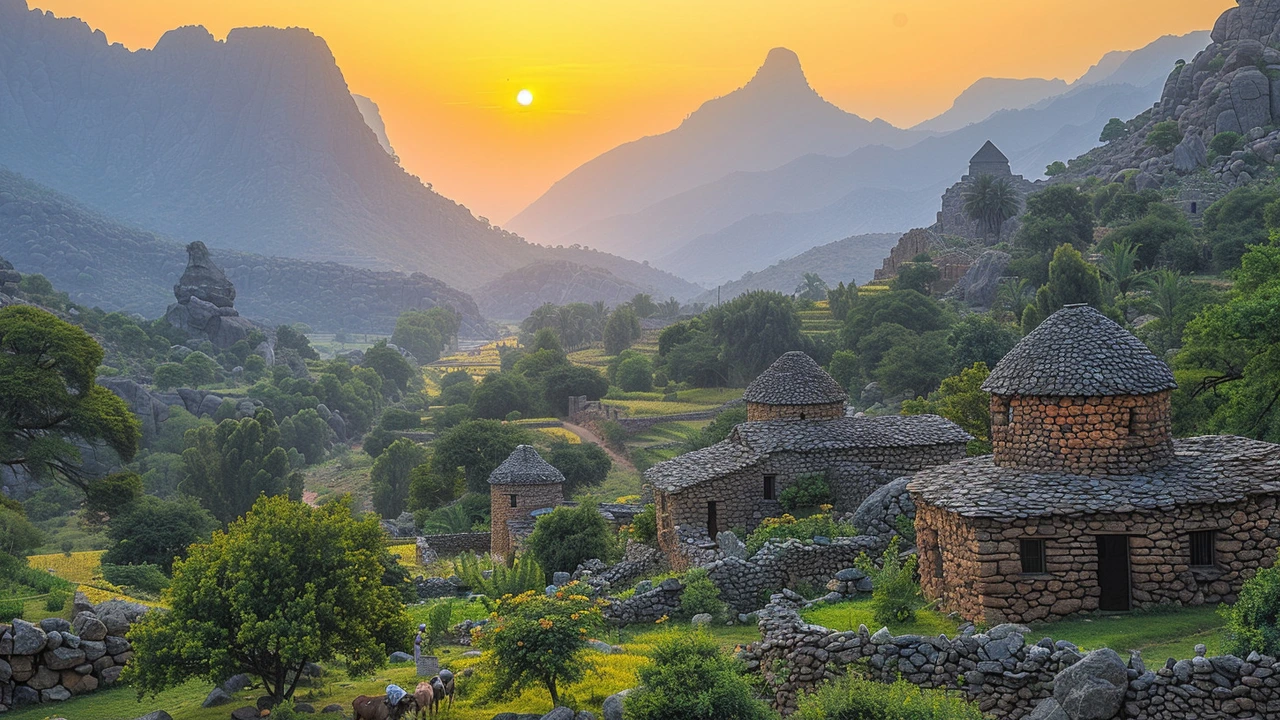
Modern Progress
In recent years, Ethiopia has embarked on an impressive journey of modernization and development. One of the most significant strides has been in the realm of infrastructure. New roads and bridges are springing up across the country, enhancing connectivity between urban and rural areas. This has not only facilitated trade but also improved access to essential services such as healthcare and education for remote communities.
The capital city, Addis Ababa, is transforming into a bustling metropolis. The skyline of Addis Ababa is dotted with new high-rise buildings, and the addition of modern amenities reflects Ethiopia's aspirations for progress. The construction of the Grand Ethiopian Renaissance Dam on the Blue Nile is another testament to the country's ambitious growth plans. Once completed, it will be the largest hydroelectric power plant in Africa, significantly boosting the nation's energy production.
Education and healthcare sectors have also seen substantial improvements. Several new universities and schools have been established to cater to the burgeoning young population. In the healthcare domain, efforts have been made to increase the number of hospitals and clinics, and improve the quality of medical services. The government’s collaboration with international organizations has played a key role in these advancements.
The telecommunications sector in Ethiopia has undergone remarkable changes too. The liberalization of the telecom industry has led to increased competition and, consequently, better services for the citizens. The introduction of mobile banking and the internet boom are opening up new opportunities for businesses and entrepreneurs across the country. The Ethiopian government has been pivotal in pushing for digital literacy, launching initiatives like Digital Ethiopia 2025 to ensure that the population is ready for a digital future.
Agriculture continues to play a crucial role in the Ethiopian economy, but modern farming techniques and technologies are being introduced to boost productivity and sustainability. The focus on value-added agriculture, such as processing raw agricultural products locally, aims to raise the country’s economic output and create more job opportunities.
Another area of significant development is tourism. Ethiopia's wealth of historical and natural landmarks is being promoted more aggressively. The government and the private sector are investing in building better facilities and services for tourists, which promises to elevate Ethiopia’s status as a must-visit destination in Africa. An increase in the annual tourist arrivals has been observed, providing a vital source of revenue for the nation.
Despite the challenges, Ethiopia’s commitment to progress is clearly visible. The blend of traditional practices and new advancements offers a unique outlook for the country. An Ethiopian journalist once remarked,
"Ethiopia is not just growing; it’s blooming. The progress is tangible and steeped in the resilience and aspirations of its people."This spirit of resilience and innovation continues to drive Ethiopia forward, carving a path toward a promising and dynamic future.

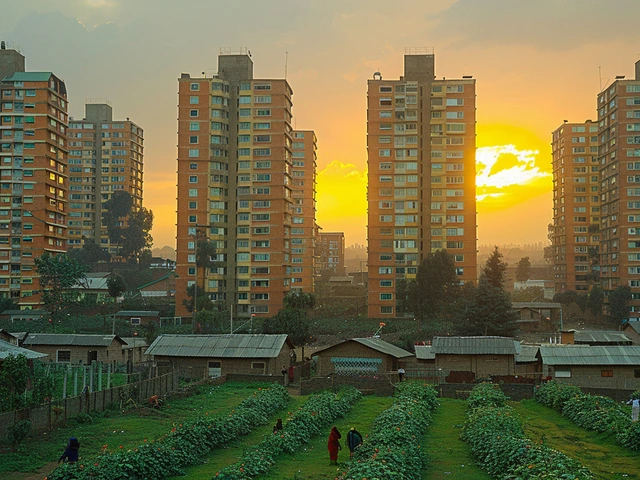 Exploring Housing in Ethiopia: Types, Costs, and Living Conditions
Exploring Housing in Ethiopia: Types, Costs, and Living Conditions
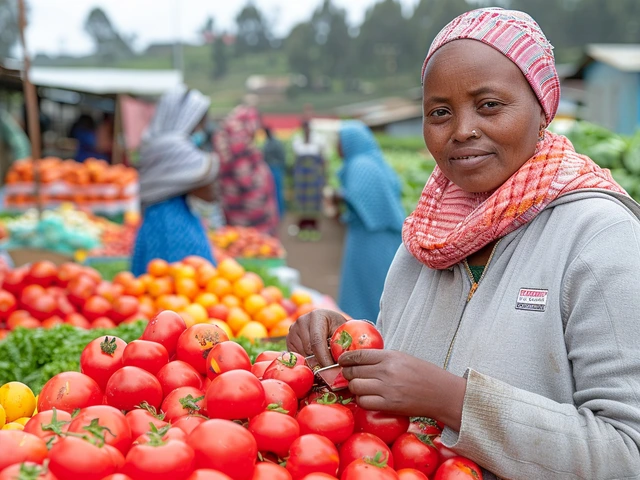 Understanding Wage Rates in Ethiopia: What You Need to Know
Understanding Wage Rates in Ethiopia: What You Need to Know
 Is PayPal Available and Legal to Use in Ethiopia?
Is PayPal Available and Legal to Use in Ethiopia?
 Discovering the Richest Fields in Ethiopia: Agriculture, Coffee, Culture, and More
Discovering the Richest Fields in Ethiopia: Agriculture, Coffee, Culture, and More
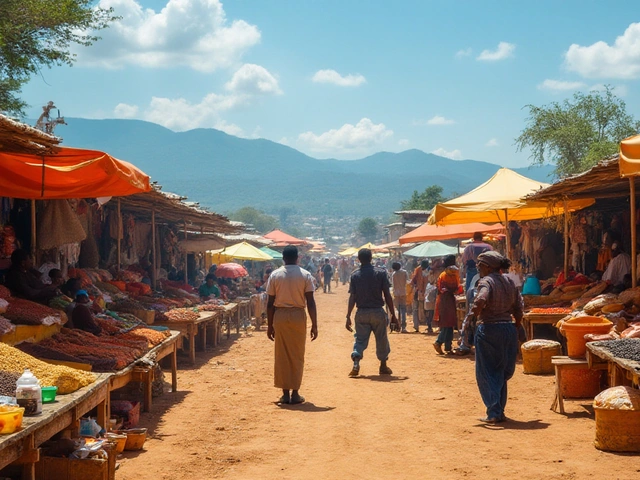 Profitable Business Opportunities in Ethiopia
Profitable Business Opportunities in Ethiopia
Pauline Herrin
June 4, 2024 AT 17:38The piece presents Ethiopia's assets admirably, yet it omits the systemic challenges that accompany rapid development. A discerning analysis should acknowledge the environmental concerns linked to mining expansion. Moreover, the discourse on coffee overlooks the socioeconomic disparities among smallholder farmers. While the cultural mosaic is celebrated, the article could benefit from a more nuanced exploration of interethnic dynamics. In sum, a more balanced perspective would enhance the scholarly rigor of this overview.
pradeep kumar
June 8, 2024 AT 04:58While the enthusiasm is palpable, the narrative glosses over critical policy shortcomings. The assertion of limitless hydro potential ignores downstream water rights disputes. Additionally, the portrayal of infrastructure growth lacks acknowledgment of debt sustainability concerns.
love monster
June 11, 2024 AT 16:18Delving into Ethiopia’s multidimensional wealth reveals a tapestry woven from geology, agriculture, and sociocultural capital. The highland agro‑ecology provides an optimal climate for teff and coffee, generating export‑grade yields that feed both domestic markets and global demand. Concurrently, the mineral sector, anchored by gold and platinum deposits, furnishes a fiscal backbone that could underwrite expansive infrastructure projects. However, the hydroelectric ventures, epitomized by the Grand Ethiopian Renaissance Dam, necessitate rigorous environmental impact assessments to safeguard biodiversity hotspots such as the Simien Mountains. The biodiversity itself, home to endemic species like the Ethiopian wolf, presents opportunities for ecotourism revenue streams that must be balanced against habitat preservation. Socio‑economically, the livestock sector sustains millions of pastoralists, yet modernizing animal husbandry practices could mitigate overgrazing pressures. On the cultural front, the Gadaa system of the Oromo exemplifies indigenous governance models that could inform contemporary decentralization efforts. The Timkat festival, with its vibrant processions, not only reinforces communal identity but also stimulates micro‑enterprise activity through crafts and hospitality services.
From a technological perspective, the burgeoning telecom liberalization fosters digital inclusion, enabling mobile banking solutions that empower rural entrepreneurs. Nonetheless, the digital divide persists, underscoring the need for targeted literacy programs. Education reforms, exemplified by the proliferation of new universities, are pivotal in cultivating a skilled workforce capable of navigating both traditional sectors and the emergent knowledge economy. In the tourism arena, strategic marketing of heritage sites like Lalibela can attract high‑value visitors, augmenting foreign exchange earnings. Yet, over‑tourism risks diluting the authenticity of these sacred spaces, demanding stringent visitor management policies. Finally, the interplay between historical resilience-exemplified by the victory at Adwa-and contemporary aspirations creates a unique national narrative that can be leveraged for diplomatic soft power. Altogether, Ethiopia’s natural and cultural endowments constitute a robust platform for sustainable development, provided that governance mechanisms align economic ambitions with ecological stewardship and social equity.
Christian Barthelt
June 15, 2024 AT 03:38The previous paragraph is commendable, yet it suffers from a recurrent misuse of the term “biodiversity hotspots” without proper citation. Moreover, the phrase “digital divide persists” is a tautology that adds little analytical value. Precision in terminology is essential for a rigorous exposition.
Ify Okocha
June 18, 2024 AT 14:58It’s glaring that the writer fails to differentiate between genuine agricultural surplus and export‑driven monoculture that erodes soil health. The omission of labor exploitation metrics in the mining sector is a deliberate whitewash, betraying a shallow understanding of systemic inequities.
William Anderson
June 22, 2024 AT 02:18Honestly, the whole thing feels like a glossy brochure that pretends depth while skimming over the cracks. The dramatics about “blooming” progress ignore the reality of bureaucratic inertia and the occasional misallocation of foreign aid funds.
Sherri Gassaway
June 25, 2024 AT 13:38One might contemplate the philosophical paradox of celebrating heritage while the very act of commodification erodes its authenticity. Is the preservation of ancient scripts a triumph of cultural memory, or merely a curated exhibit for tourists?
Milo Cado
June 29, 2024 AT 00:58It’s inspiring to see Ethiopia charting a bold path forward 🌍! The emphasis on renewable energy and digital inclusion aligns with global sustainable development goals. Let’s keep championing inclusive growth and celebrate each milestone together. 😊
MONA RAMIDI
July 2, 2024 AT 12:18While optimism is nice, let’s cut the sugarcoating-there’s still massive inequality that needs a firm, assertive push. The government must enforce stricter labor standards now.
grace riehman
July 5, 2024 AT 23:38Yo, Ethiopia’s vibe is lit! The coffee culture alone is something we all need to experience. Also, the diverse music scenes from Addis to Harar are fresh af. Keep sharing those stories!
Vinay Upadhyay
July 9, 2024 AT 10:58Sure, the article paints a rosy picture, but let’s be real: the “modern progress” they brag about often masks a heavy reliance on foreign loans. The sarcasm in that optimism is palpable.
Eve Alice Malik
July 12, 2024 AT 22:18Hey folks, any thoughts on how Ethiopia’s tech startups are faring with the new internet policies? I’m curious about the grassroots innovation happening there.
Debbie Billingsley
July 16, 2024 AT 09:38As an American, I’m proud to see a fellow nation rising on its own terms, preserving sovereignty while forging ahead.
Patrick Van den Berghe
July 19, 2024 AT 20:58Impressive.
Josephine Gardiner
July 23, 2024 AT 08:18While brevity is appreciated, the comment lacks substantive engagement with the preceding discourse and thus contributes minimally to the analytical depth of this thread.
Jordan Fields
July 26, 2024 AT 19:38The opening sentence contains a dangling modifier; clarity would be enhanced by repositioning the clause.
Divyaa Patel
July 30, 2024 AT 06:58One might muse that Ethiopia’s story is a kaleidoscope of resilience, yet the author’s surface‑level sheen fails to capture the deeper chiaroscuro of its peoples’ lived narratives.